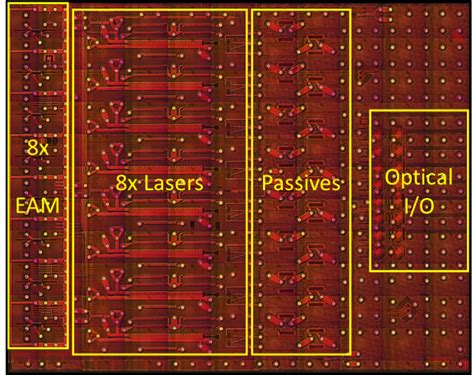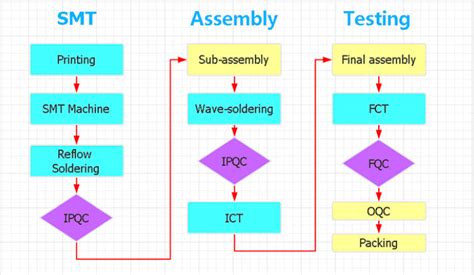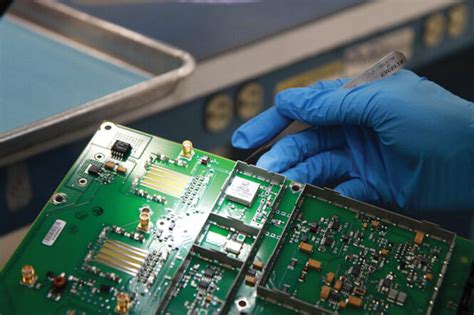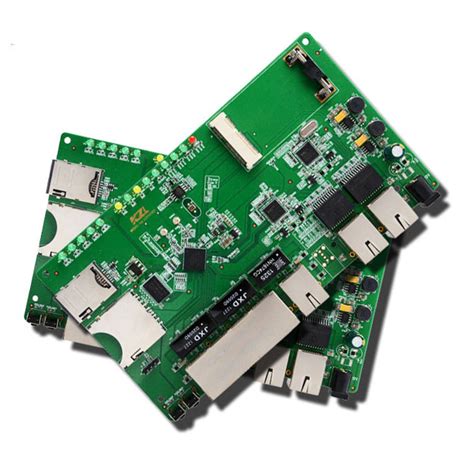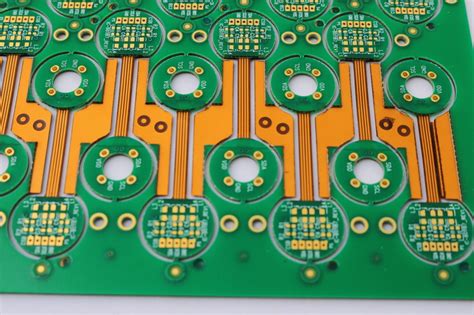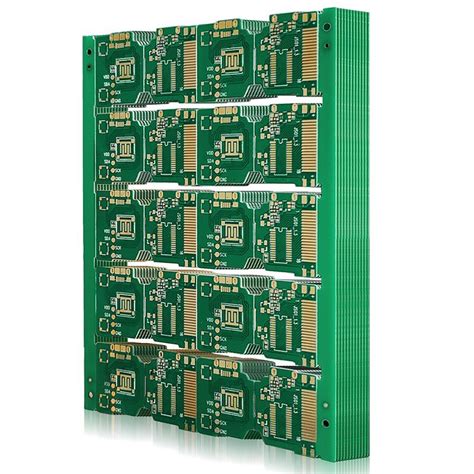Advanced Circuits Barebones Design Essentials

Key Takeaways
When approaching PCB manufacturing for barebones designs, understanding core principles ensures optimal outcomes. Start by prioritizing simplicity in layout—minimizing complex traces and layers directly impacts PCB manufacturing cost. Most PCB manufacturing companies recommend standardized panel sizes to avoid material waste, particularly crucial for prototyping phases.
Consider solder mask color choices early; while aesthetic preferences matter, opting for standard colors like green can reduce lead times and expenses. If scaling to production, explore tiered pricing models—many providers offer volume discounts that align with PCB manufacturing business growth strategies.
Balance functionality with scalability: designs that accommodate future modifications save re-engineering costs. Compare barebones services against custom solutions—while the former cuts initial expenses, the latter may offer long-term value for specialized applications. Always validate design files with your manufacturer to prevent costly revisions, ensuring your project stays within budget and timeline constraints.

Barebones PCB Design Fundamentals
When approaching PCB manufacturing for barebones designs, you must prioritize functional simplicity without compromising reliability. Start by defining core requirements: layer count, material selection, and minimum trace widths. Many PCB manufacturing companies recommend starting with standard FR-4 substrates and 1-ounce copper for cost efficiency, reserving specialized materials like Rogers or polyimide for high-frequency or thermal-critical applications.
A key consideration is balancing design complexity with PCB manufacturing cost. For instance, reducing via counts and avoiding non-standard hole sizes can lower production expenses. Use solder mask sparingly—while colors like green are typically cheaper, opting for custom hues might affect lead times. Transitioning between sections? Ensure pad-to-trace ratios align with your manufacturer’s capabilities to prevent fabrication issues.
For scalable projects, modular layouts allow easier upgrades without full redesigns. Collaborate early with your PCB manufacturing business partner to validate design rules, especially for impedance-controlled traces or high-density interconnects. Tools like design-for-manufacturing checklists help identify potential bottlenecks before prototyping.
Keep in mind that panelization strategies directly impact material utilization. Maximizing board space efficiency reduces waste, making your design more economical across production tiers. By focusing on these fundamentals, you create a foundation that supports both rapid prototyping and seamless transition to volume manufacturing.

Cost-Effective Prototyping Strategies
When developing PCB manufacturing projects, balancing speed, quality, and budget is critical. Start by selecting PCB manufacturing companies that specialize in prototyping—these providers often offer tiered pricing models to align with your project’s scale. For example, consolidating multiple designs into a single panel reduces PCB manufacturing cost by maximizing material usage.
Tip: Always verify if your chosen supplier supports design-for-manufacturing (DFM) feedback. Early corrections prevent costly revisions later.
Consider these factors to optimize prototyping expenses:
| Strategy | Impact | Best For |
|---|---|---|
| Standard FR-4 Material | Lowers base cost | Basic functional testing |
| 2-Layer Designs | Simplifies fabrication | Early-stage prototypes |
| Panelization | Reduces waste and handling fees | Small-batch validation |
| Generic Solder Masks | Avoids premium color charges | Cost-sensitive iterations |
Avoid over-engineering features at this stage—focus on validating core functionality. For instance, simplified trace layouts and standardized via sizes streamline production without sacrificing reliability. If your PCB manufacturing business involves frequent prototyping, negotiate volume discounts or explore subscription-based pricing tiers.
Finally, align your design with scalable practices. A prototype that’s too customized might save time initially but inflate PCB manufacturing cost during mass production. Prioritize modularity to ensure seamless transitions between prototyping and full-scale runs.

Solder Mask Color Cost Implications
When selecting solder mask colors for your PCB manufacturing project, you’ll find that aesthetics and functionality intersect with cost considerations. While standard green remains the most economical choice, opting for custom colors like red, blue, or black often increases PCB manufacturing cost due to additional material preparation and quality control steps. PCB manufacturing companies typically charge premiums for non-standard hues because they require specialized ink formulations and extra production time to ensure color consistency.
For high-volume orders, some providers offer tiered pricing that reduces per-unit expenses, but this depends on your PCB manufacturing business strategy and scale. Lighter colors, such as white or yellow, may also demand stricter cleanliness protocols during fabrication to avoid visible contaminants, indirectly raising costs. If budget constraints are critical, sticking to standard green allows you to allocate resources to other design priorities—like layer count or trace density—without compromising reliability.
Always verify color-specific pricing tiers with your manufacturer early in the design phase. This proactive approach helps avoid unexpected cost spikes while balancing visual branding needs with cost-effective PCB manufacturing outcomes.
Advanced Circuits Pricing Tiers
When evaluating PCB manufacturing costs, understanding Advanced Circuits’ tiered pricing structure helps align your project’s requirements with budget constraints. Their pricing model is divided into three primary tiers: prototyping, mid-volume, and high-volume production. For prototypes, you’ll find competitive rates optimized for low-quantity orders, ideal for testing designs before committing to larger batches. Mid-volume tiers balance cost efficiency with moderate scalability, catering to projects requiring iterative adjustments. High-volume tiers prioritize bulk discounts, making them suitable for established PCB manufacturing businesses aiming to minimize per-unit costs.
Key factors influencing these tiers include board complexity, material selection, and turnaround time. For example, opting for standard FR-4 substrates over specialty materials can reduce PCB manufacturing cost by up to 30%. Additionally, Advanced Circuits’ transparent pricing calculator allows you to simulate expenses across tiers, ensuring cost predictability. While solder mask color choices (discussed earlier) affect aesthetics, they also play a role in tiered pricing—standard green solder mask often incurs no premium, whereas custom colors may elevate costs in lower-volume tiers.
By aligning your order volume and design specifications with the appropriate tier, you can leverage Advanced Circuits’ structured pricing to optimize budgets without compromising quality. This approach is particularly valuable when comparing services across PCB manufacturing companies, as not all providers offer such granular cost scalability.
Optimizing PCB Production Costs
When balancing performance requirements with budget constraints, understanding key cost drivers in PCB manufacturing becomes critical. Start by evaluating material selection: standard FR-4 substrates often provide sufficient reliability for most applications while minimizing PCB manufacturing cost compared to specialized laminates. Work closely with PCB manufacturing companies to identify thresholds where bulk ordering triggers price reductions—many suppliers offer tiered pricing for quantities exceeding 50 or 100 units.
Design simplification plays a pivotal role—reducing layer counts, avoiding unnecessary via-in-pad structures, and adhering to standardized specifications for trace widths/spacing can lower fabrication complexity. However, ensure these optimizations don’t compromise signal integrity or thermal management. For prototypes, consider panelization to share PCB manufacturing business expenses across multiple designs, but verify your vendor’s depaneling fees to avoid hidden costs.
Leverage solder mask color strategically: while black or white options might align with branding, standard green solder mask typically incurs no premium. Finally, analyze lead time flexibility—slight adjustments to delivery schedules (e.g., shifting from 5-day to 10-day turnaround) often reduce expedited service charges. By aligning design choices with PCB manufacturing economies of scale, you create a cost-efficient foundation without sacrificing scalability for future production ramps.
Barebones vs Custom PCB Services
When choosing between barebones PCB manufacturing and custom solutions, you need to weigh speed, cost, and complexity. PCB manufacturing companies typically offer both options, but understanding their distinct advantages ensures you align your choice with project goals. Barebones services prioritize standardized designs and rapid turnaround, ideal for prototypes or high-volume production where PCB manufacturing cost reduction is critical. These pre-optimized layouts minimize design iterations, letting you focus on functional testing.
Custom services, however, cater to specialized requirements—think high-frequency signal integrity or unusual form factors. While this flexibility supports complex applications, it often increases PCB manufacturing business expenses due to extended engineering time and material customization. For example, a custom design might require unique solder mask colors or advanced layer stacking, which impacts both timelines and budgets.
Transitioning between the two? Start with barebones for proof-of-concept stages, then scale to custom solutions if market demands evolve. Always verify if your PCB manufacturing partner provides hybrid options—some suppliers allow incremental customization of barebones frameworks, blending affordability with tailored performance. This approach balances scalability and cost-efficiency, ensuring you don’t over-engineer early iterations or under-specify final products.
Design Considerations for Scalability
When designing PCB manufacturing-ready barebones boards, scalability requires balancing immediate project needs with future expansion. Start by standardizing component placement to ensure consistent assembly processes across batches—this reduces errors when scaling production. Use a modular layout that allows functional blocks to be added or removed without redesigning the entire board. For example, leaving space for additional I/O connectors or power rails ensures flexibility as requirements evolve.
Collaborate early with PCB manufacturing companies to align your design with their equipment capabilities. Standardized via sizes and trace widths, for instance, minimize tooling adjustments during volume shifts. Avoid overly complex layer stacks unless absolutely necessary, as higher-layer counts increase PCB manufacturing cost and limit compatibility with high-volume fabrication lines.
Consider thermal management in scalable designs: uniform heat distribution prevents hotspots that could degrade performance in denser configurations. Additionally, document design rules meticulously—clear guidelines for future iterations streamline communication with your PCB manufacturing business partners. By prioritizing adaptability and manufacturability, you create a foundation that supports both prototyping efficiency and seamless transition to mass production.
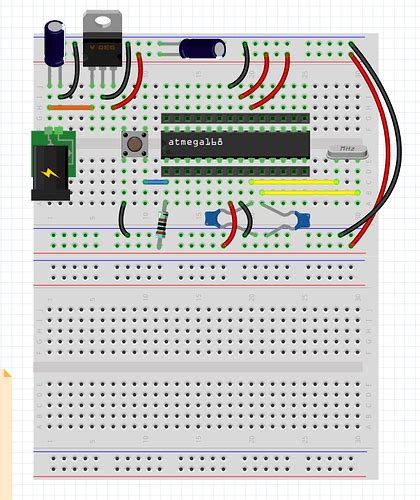
Future-Proofing Your PCB Designs
When working with PCB manufacturing companies, designing for adaptability ensures your projects remain viable amid evolving technological demands. Start by selecting standardized component footprints and universally compatible interfaces—this reduces dependency on proprietary parts that may become obsolete. Incorporate modular layouts that allow functional upgrades without full redesigns, minimizing long-term PCB manufacturing cost spikes.
Consider material choices that balance performance and scalability. For instance, FR-4 substrates are cost-effective for prototypes, but high-frequency applications might require advanced laminates as your PCB manufacturing business scales. Collaborate early with manufacturers to align design specifications with their production capabilities, ensuring seamless transitions from prototyping to mass production.
Traceability features like unique fiducial markers or test-point clusters simplify future diagnostics, reducing rework expenses. Additionally, document version-controlled design files to streamline iterations. By anticipating component lifecycle trends and PCB manufacturing constraints, you create boards that withstand market shifts while maintaining competitive pricing tiers. This forward-thinking approach not only safeguards your investments but also positions your projects for rapid adaptation in dynamic industries.
Conclusion
When optimizing PCB manufacturing processes, understanding the balance between barebones design principles and scalability becomes critical. By leveraging PCB manufacturing companies that specialize in cost-efficient solutions, you can significantly reduce PCB manufacturing cost while maintaining production quality. The key lies in selecting standardized features—like limited-layer counts and predefined solder mask options—that align with your project’s phase, whether prototyping or scaling.
For long-term success in the PCB manufacturing business, prioritize designs that allow incremental upgrades without requiring complete overhauls. This approach not only minimizes upfront expenses but also ensures compatibility with future enhancements. Always evaluate pricing tiers and material choices early in the design phase—decisions like solder mask color or finish type directly impact both aesthetics and budget.
Finally, remember that simplicity in barebones designs doesn’t mean compromising functionality. Partnering with experienced manufacturers ensures you achieve the optimal balance between affordability and performance, positioning your projects for scalable growth in competitive markets.

FAQs
How do barebones PCB designs affect manufacturing timelines?
Barebones designs streamline PCB manufacturing by minimizing complex features, allowing PCB manufacturing companies to accelerate prototyping. This approach reduces PCB manufacturing cost while maintaining functional reliability for initial testing phases.
What factors influence cost variations in barebones PCB production?
Material selection, board size, and layer count primarily drive PCB manufacturing cost. Solder mask color choices—particularly non-standard hues—can add 10-15% to expenses. Bulk orders typically unlock tiered pricing from PCB manufacturing business providers.
When should you transition from barebones to custom PCB services?
Upgrade when your design requires specialized components or high-density interconnects. Many PCB manufacturing companies offer hybrid solutions, blending barebones foundations with targeted customizations for cost-effective scaling.
How do you ensure scalability in initial barebones designs?
Incorporate modular layouts and standardized footprints during schematic planning. This allows seamless integration of additional features without overhauling core architecture, optimizing long-term PCB manufacturing efficiency.
Ready to Start Your Project?
Explore tailored solutions for your barebones PCB needs—please click here to connect with industry-leading PCB manufacturing business experts.

